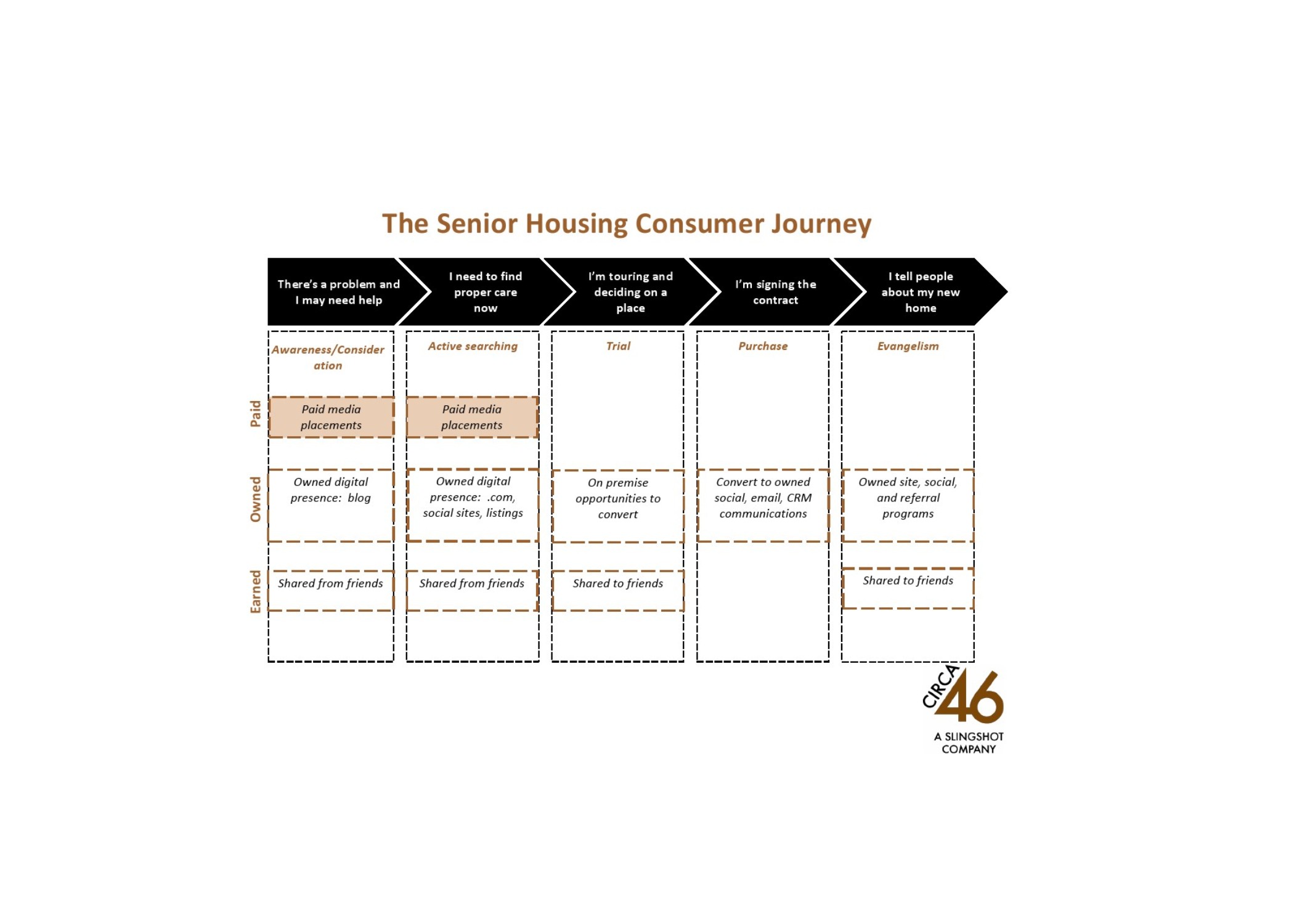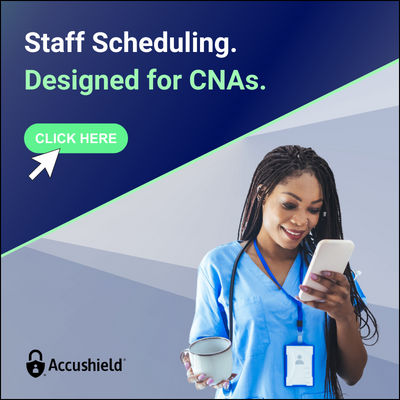Serve up the right communication to help move your prospect along his or her journey to your community.
By Paul W. Flowers, president of Circa 46 a Senior Housing Forum Partner
The 5 Phases
It will not come as a surprise that the route from prospect to resident in the assisted living arena can be complicated. While there are a lot of pathways to your community, the consumer journey for senior housing can reasonably be segmented into five phases:
- Phase 1 – Awareness/Consideration (“There is a problem and I may need help”)
- Phase 2 – Active Searching (“I need to find proper care now”)
- Phase 3 – Trial (“I am touring and deciding on a community”)
- Phase 4 – Purchase (“I am signing the contract”)
- Phase 5 – Evangelism (“I am settled in, and am telling others about my new home”)
When you consider your prospect’s journey to senior housing according to this sequence, you begin to see that different types of marketing communications channels and activities should be employed at different journey phases, to help guide prospects to your community. It works like this:
Phase 1 – “There is a problem and I may need help”
It is a good thing to already be on a potential resident’s radar when the need for assisted living occurs. Here’s where traditional advertising pays off, whether it is direct mail, newspaper ads, online banner ads or any other forms of outreach that allow you to proactively present your community to potential prospects. The main goal during Phase 1 is to establish awareness of your community in the prospect’s mind before the need for assisted living becomes acute, and create a positive impression that carries over to Phase 2 of the journey.
Phase 2 – “I need to find proper care now”
As the intensity of need for assisted living heats up, making sure your community is easily findable becomes more important because the prospect and his/her caregivers are now actively searching for the right living option. In addition to creating a positive impression, advertising during this phase must be directional, too.
Search engine marketing – like Google AdWords – and online banner ads allow the prospect to click directly to a community’s website. Retargeted banner ads, served up to prospects who have Googled appropriate search terms, will keep the community front and center when the prospect is considering housing options. Online referral sites, like Caring.com, a Senior Housing Forum partner also deliver these motivated prospects to the community’s website, where they can take a deeper dive into the features and benefits of the community at a time when that information really matters.
Phase 3 – “I’m touring and deciding on a community”
At this point in the journey, paid advertising gives way to direct sales that should be supported by compelling sales literature. While there is residual value for advertising as a means of reinforcing the prospect’s perception of the community, advertising by itself generally will not turn prospects into residents. The burden of closing the sale falls to the marketing team.
Phase 4 – “I am signing the contract”
Actually, a lot of marketing activity occurs from Phase 3 to Phase 4 of the journey. Marketing communications will likely include dozens of contacts by the marketing team, including phone calls, emails, direct mail, social media posts, community visits and more. The marketing goals during this phase are to maintain top-of-mind awareness about the community, establish relationships with the prospects, help them visualize the many attractive aspects of living at the community – and ultimately to sign a contract and make a deposit on a unit.
Phase 5 – “I am settled in, and am telling others about my new home”
Your new resident can now become your new best salesperson, assuming the move-in experience was good. Ready to share the excitement of this life change with friends and potential future residents, he or she can help fill the sales pipeline through referrals, social media posts (yours and theirs), as well as testimonials featured on the community’s website, referral sites and other sales materials.
At any given point in time, your pipeline is filled with prospective residents across this spectrum. Recognize that different types of communications are required, depending on where the prospect resides along that spectrum. Then serve up the right communication to help move your prospect along his or her journey to your community.









